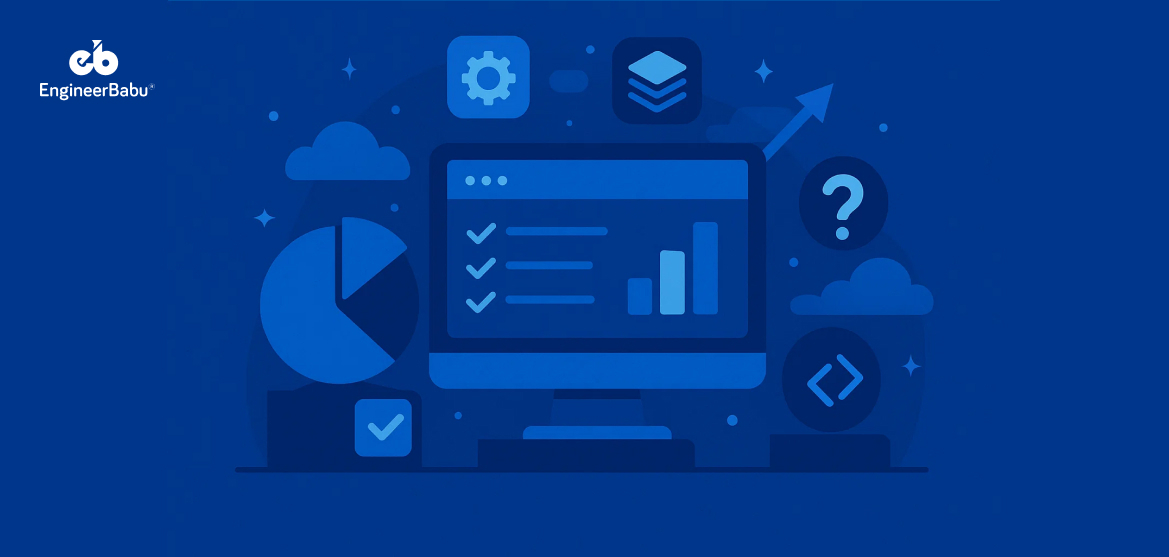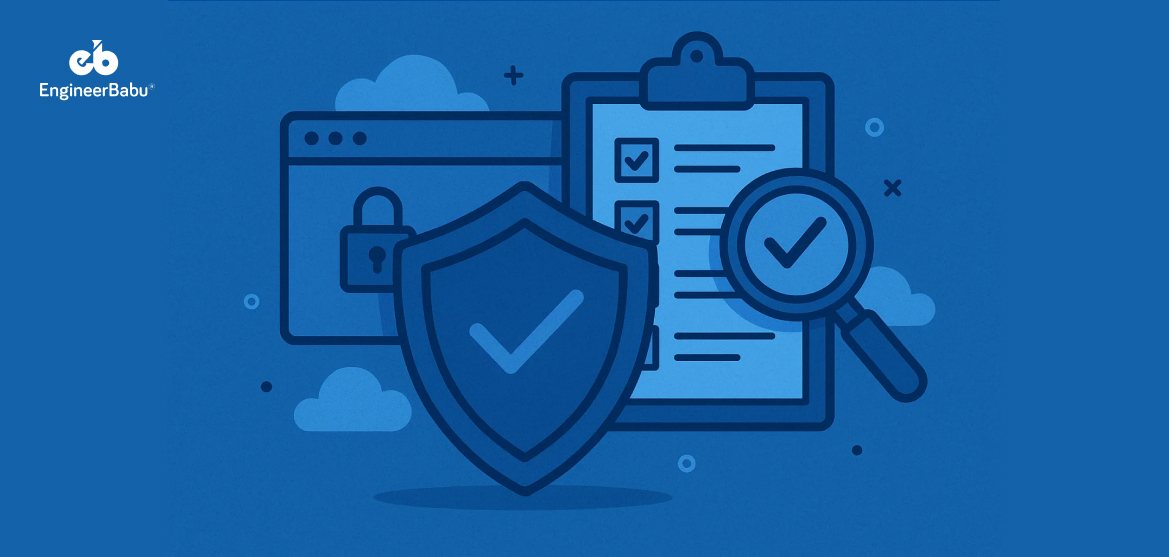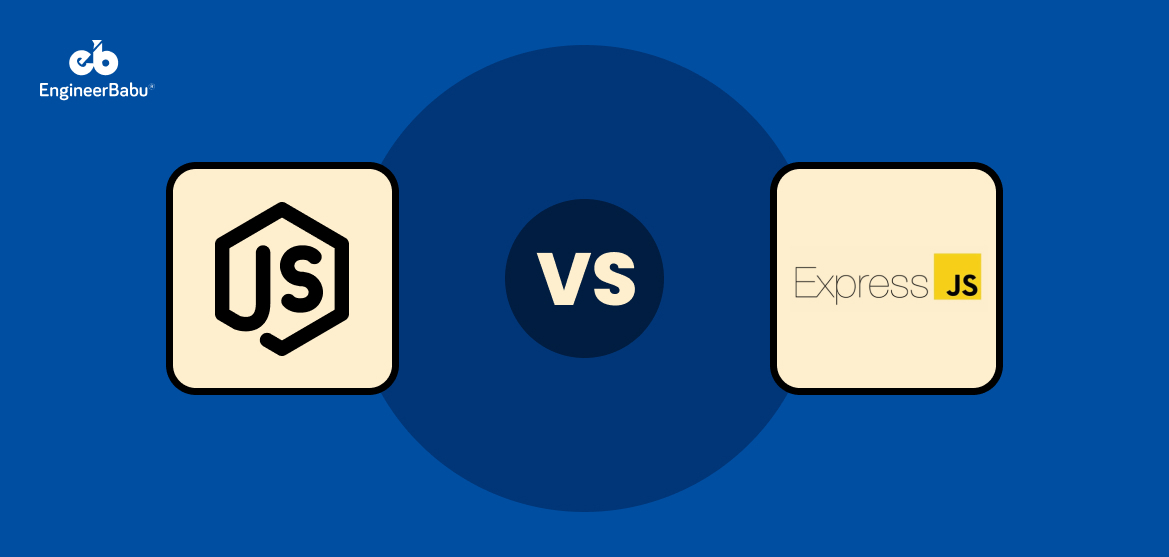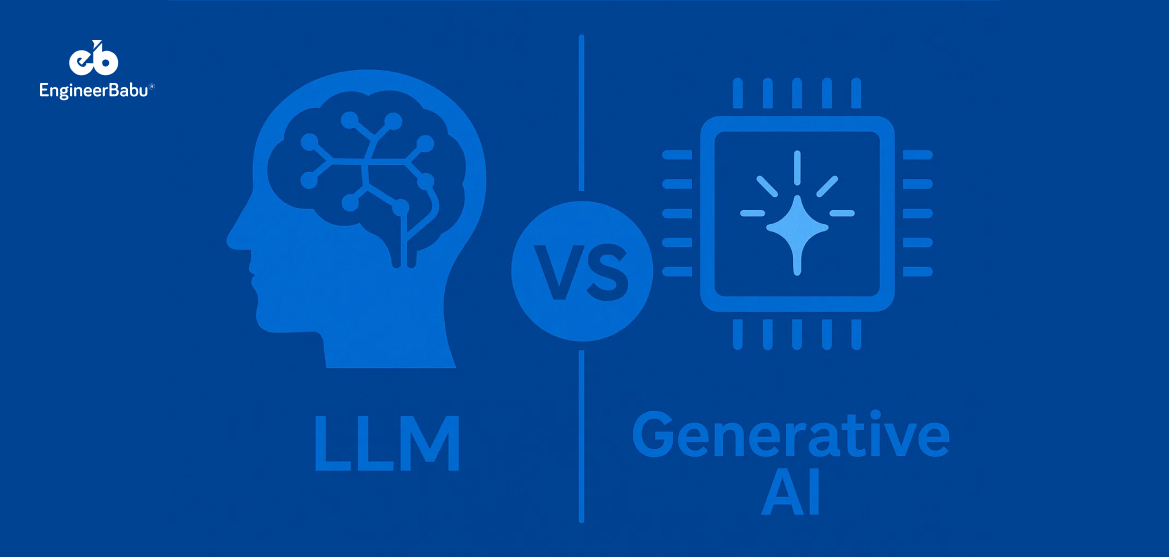Choosing the right technology stack can feel like signing up for a lifetime commitment because, for many projects, it really is. One wrong framework or database decision early on can balloon maintenance costs, slow down development, or block future growth.
That’s why a transparent tech stack comparison isn’t just academic, it’s pragmatic. In 2025, the tech landscape is shifting fast: Docker adoption increased 45% year-over-year among developers, reflecting how containerization is becoming foundational to deployment.
At the same time, 84 % of developers now use or plan to use AI tools in their workflows, up from 76 % last year, as per Stack Overflow.
As a result, in this article, we will walk you through a side-by-side tech stack comparison, what they do best, where they struggle, and how to pick based on your project’s needs. No fluff, no hype. Just clear guidance you can act on.
Understanding a Tech Stack
Before you start tech stack comparison, it’s important to understand what a tech stack actually is. In simple terms, a tech stack is the collection of technologies that power your application from what users see on the screen to how data moves behind the scenes.
Each layer plays a specific role, and how these layers interact determines the performance, scalability, and flexibility of your final product.
1. Front-End: The User’s Window to Your Product
The front end is everything users see and interact with. It includes the layout, navigation, animations, and how fast the app responds. Developers typically use a combination of services like HTML, CSS, and JavaScript frameworks. This includes Vue.js, Angular, or ReactJS development services.
The front end is more than visuals, it’s about user experience. The right framework can make interfaces faster and smoother, while poor choices can lead to lag, rendering issues, and higher bounce rates.
For instance, React’s component-based structure makes it ideal for fast, interactive UIs, while Angular’s structured approach benefits large, complex applications.
2. Back-End: The Engine That Runs the Show
If the front end is the car’s dashboard, the back end is the engine. It handles everything the user doesn’t see, data storage, authentication, security, and business logic. Common back-ends include Node.js, Python (Django or Flask), Java, Ruby on Rails, and .NET.
A strong back-end setup ensures your application can scale without breaking under heavy load. For example, NodeJS development services are great for real-time apps like chat or streaming platforms because of its non-blocking architecture.
Meanwhile, Python development services are good for their simplicity and rich libraries, which speed up development in data-driven projects.
3. Database: The Information Hub
Databases store and organize the data your application relies on. You can choose between relational databases (like MySQL or PostgreSQL) that store data in tables, or NoSQL databases (like MongoDB or Cassandra) that store data more flexibly.
The choice depends on the kind of data you’re managing. For structured data such as user records or transactions, SQL databases are ideal. For applications dealing with large, unstructured data, such as social media content or IoT feeds, NoSQL databases perform better and scale easily.
4. Cloud and DevOps: The Backbone of Modern Apps
Today, very few businesses host applications on traditional servers. Cloud platforms like AWS, Google Cloud, and Microsoft Azure handle infrastructure, scaling, and security. Combined with DevOps tools such as Docker, Kubernetes, and Jenkins, they automate deployment and reduce manual effort.
A cloud-based setup also helps teams deploy faster, roll out updates seamlessly, and maintain consistent performance across regions. That is why it is crucial to understand these before understanding the tech stack comparison.
5. APIs and Integrations: Making Everything Talk
No modern application works in isolation. APIs (Application Programming Interfaces) let your app connect with third-party tools such as payment gateways, CRMs, or analytics platforms. They act as bridges, ensuring smooth communication between different systems.
Choosing professional API development services makes your product more flexible and easier to expand later. It also helps when you want to integrate mobile apps, web platforms, and microservices into one ecosystem.
Popular Tech Stacks in 2025: A Detailed Comparison
In this section, we’ll dig into several tech stacks that are making noise in 2025. For each, I’ll explain where it shines, where it struggles, and what types of projects it’s best suited for. This is where your “Tech Stack Comparison” really starts to take shape.
1. MERN Stack (MongoDB, Express.js, React, Node.js)
Why it’s popular: The MERN stack remains a favorite among startups and web-first products. With JavaScript running end-to-end, developers can maintain consistency in tooling and logic.
Strengths:
- Fast front-end experience using React’s component model.
- JSON everywhere: data flows more smoothly because MongoDB, Express, and Node all use JavaScript.
- Extensive ecosystem, plenty of plugins, libraries, and community support.
- Good fit when you need to build single-page apps or interactive dashboards.
Weaknesses:
- Not always ideal for very heavy computation or CPU-intensive tasks.
- Scaling highly relational data can become complex in MongoDB.
- You may hit bottlenecks if business logic becomes tightly coupled across layers.
Best use cases: Web apps with medium complexity, dashboards, admin panels, and SaaS development services.
2. MEAN Stack (MongoDB, Express.js, Angular, Node.js)
Why it works: MEAN gives you more structure than MERN because Angular enforces opinions. You will always find MEAN at the top in the tech stack comparison list. If you prefer strong conventions and a modular architecture from the start, MEAN can help.
Strengths:
- Angular’s tooling (CLI, modules, dependency injection) helps in large, organized codebases.
- Better for enterprise setups where you want consistency across developers.
- Two-way data binding can simplify form-heavy applications.
Weaknesses:
- Steeper learning curve compared to React’s more flexible approach.
- Angular’s verbose code style may feel heavy for smaller teams or projects.
- Overkill for simple apps or prototypes.
Best use cases: Enterprise software development, internal tooling, systems with multiple modules and teams.
3. LAMP Stack (Linux, Apache, MySQL, PHP)
Why it’s still alive: LAMP has been around for decades, and it often becomes a point of debate, one of the main reasons teams turn to a tech stack comparison in the first place. LAMP is still solid for many cases, especially in content management, blogs, or classic e-commerce sites.
Strengths:
- Extremely mature, lots of tooling, hosting options, and community knowledge.
- Easy to find qualified PHP developers.
- Works well for systems where relational data integrity is key.
Weaknesses:
- Scaling dynamic parts of the app can become cumbersome.
- Less modern in terms of reactive user interfaces, compared to SPA frameworks.
- Integrations or real-time features (websockets, push updates) often require extra layers.
Best use cases: CMS-based sites, legacy migrations, and sites needing strong SQL support.
4. Serverless Stack (AWS Lambda, DynamoDB / Fauna, API Gateway, React / Vue)
Why it’s gaining traction: Serverless architecture means you don’t manage servers, your cloud provider does the heavy lifting. You pay for execution, not idle capacity.
Strengths:
- Cost-effective for low-to-medium traffic workloads.
- Auto scaling, zero server maintenance.
- You can deploy features independently, often faster.
Weaknesses:
- “Cold starts” can cause latency for functions that aren’t always warmed up.
- Vendor lock-in risk, your architecture becomes tightly coupled to a cloud provider.
- Monitoring and debugging distributed functions can get complex.
Best use cases: Microservices, event-driven systems, APIs, backends for mobile apps or IoT.
5. Python + Django / Flask
Why it fits: Python has been growing steadily, in 2025, it’s a top choice for back-end logic, especially when data, AI, or analytics are involved, as per the same Stack Overflow report mentioned above. This makes it an important part of any modern tech stack comparison.
Strengths:
- With Django development services, you get batteries-included features (authentication, admin UI, ORM).
- Rich library ecosystem for ML, data pipelines, automation.
- Clear, readable syntax makes onboarding and maintenance easier.
Weaknesses:
- Performance isn’t as high as some compiled languages or event-driven back ends.
- Async support is still evolving, if your workload is heavily concurrent, you need to plan carefully.
- Scaling horizontally (multiple instances) may require more infrastructure work.
Best use cases: Data platforms, internal tools, AI/ML pipelines, web apps with heavy logic behind.
6. .NET Stack
Why it matters: .NET has matured. With its cross-platform support and deep integration with Microsoft’s cloud offerings. It’s a solid option for serious enterprise software and continues to hold a strong position in every tech stack comparison.
Strengths:
- Strong performance (especially with .NET 8+).
- Good tooling (Visual Studio, debugging, performance diagnostics).
- Excellent type safety, versioning, backward compatibility.
- Works well in Windows environments and cloud-native microservices.
Weaknesses:
- Historically more closed, though that’s changing.
- Licensing or ecosystem constraints depending on your stack.
- Smaller open-source community compared to JavaScript or Python.
Best use cases: Enterprise software, internal systems, applications with strict regulations.
7. Flutter + Firebase (or similar mobile-first full stack)
Why it’s trending: More than ever, apps need to reach users on mobile and web without maintaining separate codebases. Flutter development paired with Firebase backend gives you that.
Strengths:
- Single codebase for Android, iOS, and web.
- Backend-as-a-service (BaaS) handles authentication, real-time database, storage, etc.
- Fast to prototype and validate an MVP.
Weaknesses:
- You lose flexibility for very custom backend logic, Firebase can be limiting at scale.
- Performance constraints in highly animated or AR-heavy apps.
- Dependency on Google’s ecosystem may raise vendor lock concerns.
Best use cases: Mobile apps, MVP development, projects where you need to enter market quickly.
Each of these stacks has pros and cons. In the next section, we have built a comparison table using Tech Stack Comparison so you can see side-by-side how they perform across metrics.
Tech Stack Comparison Table (2025)
Choosing the right stack involves trade-offs. Each combination of tools performs differently based on your team’s skills, scalability goals, and long-term maintenance needs.
Below is a Tech Stack Comparison summarising how leading technologies stack up across performance, learning effort, and cost.
| Tech Stack | Performance | Scalability | Community Support | Cost | Ideal Project Type |
| MERN (MongoDB, Express, React, Node) | High for web apps due to async architecture | Scales well with cloud infrastructure | Very strong, huge JS ecosystem | Low to medium | SaaS apps, dashboards, real-time platforms |
| MEAN (MongoDB, Express, Angular, Node) | High, but heavier rendering than React | Strong for structured enterprise projects | Large enterprise-level support | Medium | Enterprise portals, internal systems |
| LAMP (Linux, Apache, MySQL, PHP) | Moderate; reliable for traditional sites | Limited compared to newer stacks | Mature and well-documented | Low | CMS, blogs, eCommerce |
| Serverless (AWS, DynamoDB, React) | Very high, no server overhead | Auto-scales dynamically | Growing, cloud communities are active | Pay-per-use, low entry cost | Microservices, event-driven systems |
| Python + Django / Flask | Moderate to high for data-heavy apps | Good with proper infrastructure | Excellent, especially in AI/ML | Medium | AI, analytics, data platforms |
| .NET (C#, .NET Core) | Very high, optimised for enterprise scale | Excellent, cloud-native ready | Robust enterprise support | Medium to high | Enterprise software, fintech app development, ERP |
| Flutter + Firebase | High for MVPs and mobile apps | Limited by Firebase constraints | Strong, backed by Google | Low for startups | Mobile and cross-platform MVPs |
Each stack offers its own balance of speed, flexibility, and cost. The goal isn’t to chase what’s trending but to find what aligns with your project’s lifecycle and technical roadmap.
Conclusion
A well-researched Tech Stack Comparison isn’t just about picking modern tools. It’s about finding a combination that supports your product’s vision, team capacity, and long-term goals.
The right stack can mean faster development, fewer bottlenecks, and easier scalability as your business grows.
Every project is different, an AI-driven app won’t share the same requirements as an enterprise ERP or an eCommerce platform. The smartest approach is to align your tech stack with what your users need today and what your company plans to build tomorrow.
If you’re unsure where to start, EngineerBabu can help you make that decision with confidence. Our team has built products using every major stack discussed above, from React-based web apps to enterprise-grade .NET systems.
Talk to EngineerBabu today to choose the perfect stack for your next big project.
FAQs About Tech Stack Comparison
1. What is a tech stack, and why does it matter?
A tech stack is the set of tools, frameworks, and programming languages used to build a software product. It matters because the right combination influences your project’s speed, performance, and scalability.
2. How often should companies update their tech stack?
There’s no fixed timeline, but most teams review their stack every 2–3 years. If a framework stops being maintained, or new technologies drastically improve performance, it’s worth revisiting your choices.
3. What’s the most cost-effective tech stack for startups in 2025?
For startups, the MERN development services are often the best balance of speed, cost, and flexibility. They let you build and deploy MVPs quickly without heavy infrastructure costs.
4. Can I combine technologies from different stacks?
Yes. Many companies now use hybrid stacks like pairing a React front end with a Python or Go back end. What matters most is compatibility, maintainability, and how well your team understands each component.
5. How does EngineerBabu help in Tech Stack Comparison?
EngineerBabu analyses your business objectives, scalability requirements, and team expertise to recommend the most suitable stack. We don’t just choose tools, we help you build a roadmap for sustainable growth and technical excellence.




